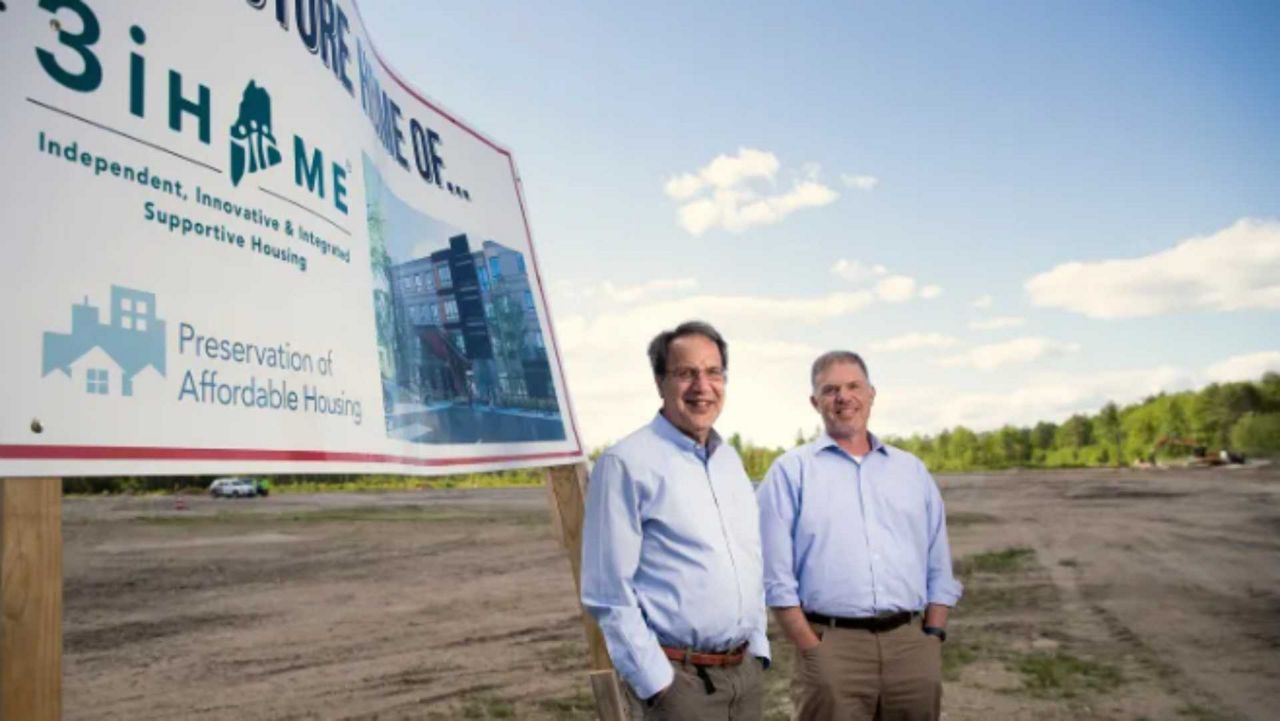When Paul and Susan Linnett moved to Maine nearly 20 years ago, they couldn’t find housing that fit Susan, whose mobility was impaired by multiple sclerosis.
Paul Linnett said he was fortunate to have the funds to add an extension to their home so his wife could live comfortably.
But he knows not every family has that option.
When Susan was diagnosed, “I remember the neurologist calling me and saying, ‘Someone with what your wife has probably needed to be institutionalized,'” Lynette says. “I felt the hairs on the back of my neck stand up. … It was a terrible awakening.”
When his wife passed away in 2016, Lynette decided she wanted to improve housing conditions for people with physical and mobility disabilities.
“We realized that others didn’t have the resources we needed to come together and thrive,” he said.
Lynette, who lives in Durham, founded 3i Housing of Maine, a nonprofit that works to create independent, community-based living options for people with disabilities. Lynette said 3i Housing’s mission is innovation, independence and inclusion.
The nonprofit’s first project, 51 fully accessible apartments at The Downs in Scarborough, is moving forward with a $5.4 million boost from the Maine Housing Authority’s Low-Income Housing Tax Credit program.
Linnett partnered with Boston-based Preservation of Affordable Housing Inc. to develop the property.
“We know the need is there,” said Linnett, who said that while construction is still months away, they’re already getting inquiries from around the country.
He believes the project provides an opportunity to set a national standard for what stable, affordable and accessible housing is.
ADA compliant design
The 51 apartments will be designed to meet or exceed Americans with Disabilities Act standards. Each apartment will have within reach sinks, appliances, storage space and roll-in showers. Ceilings will be reinforced to accommodate elevators if needed. The overall footprint of the apartments and common spaces will be larger to accommodate wheelchair users.
The units also offer individually tailored assistive technology and other features to help residents maintain their independence, including voice-controlled window blinds and HVAC systems.
The homes will be designed to be “plug and play”: Features may change depending on what assistive technology residents need, but the underlying infrastructure will be in place to support it, said Corey Fellows, vice president of real estate development for the Affordable Housing Preservation Coalition.
Enoch Glidden, development coordinator for Maine Adaptive Sports and Recreation, said assistive technology is often out of reach for people who need it.
“Either your insurance won’t pay for it or you can’t afford it,” he said. “Having it available can be life-changing.”
Glidden, who was born with spina bifida and uses a wheelchair, said the project “is really going to change the face of housing for people.”
The building’s first floor will feature dedicated workspace for health and human service providers and an entrepreneurship center with educational opportunities for assistive technology inventions.
Mr Linnett said The Downs – formerly the Scarborough Downs racetrack – was an ideal location for the residential development because of its concentration of services and amenities. He sees it as a pilot project for a model that could be spread across the state and country.
Specially equipped buses will help residents get to work, thanks to a $127,000 grant from the Maine Department of Transportation.
Rents for the one-, two- and three-bedroom apartments will range from about $1,000 to $2,200 per month. The units are expected to open in late 2026.
The project is being funded through a “patchwork” of public and private grants and partnerships, Fellows said. To get assistance from agencies like Maine Housing, the core costs of building and designing the affordable housing units must be separated from the cost of the assistive technology. Fellows estimates that construction and design costs will be about $18 million, with another $1 million to $2 million to equip the units with assistive technology.
I want to set an example
Fellows hopes that the success of this project will pave the way for a smoother process for future efforts.
“If we can demonstrate that this is an alternative model, we hope that we will see these types of capabilities more fully integrated into the core financing of these types of projects,” he said.
Maine is already facing a housing crisis: a historic shortage of housing, one of the oldest housing stocks in the country, an influx of immigrants, a changing workforce and skyrocketing home prices have snowballed into a situation where there aren’t enough homes for all the people who need them.
Meanwhile, the closure of communal living and assisted living facilities during the pandemic has made it even harder for adults with disabilities to find suitable, affordable housing.
“Low-income people are struggling, and low-income people with disabilities are really struggling,” Lynette said.
According to the American Association of Disabilities, 27 percent of Americans with disabilities live in poverty, compared with 12 percent of those without disabilities.
According to the U.S. Department of Housing and Urban Development, less than 1 percent of homes in the U.S. are equipped to help wheelchair users live independently.
“The numbers are really staggering,” Linnett said.
“Disability doesn’t distinguish between income groups,” said Maine Housing Development Commissioner Mark Wiesendanger, “Eight percent of Mainers have a mobility disability. That could be the wealthiest 8 percent, the poorest 8 percent, and every income group in between.”
MaineHousing is planning more than 900 affordable housing units, many of which will have handicap-accessible features, but Wiesendanger said this is the only project specifically for people with disabilities.
MaineHousing awarded the money because 3i’s application met requirements for the agency’s low-income tax credit program, but Wiesendanger said it’s “good to know our money is going to such a good cause.”
To receive more news and information from this partner, please sign up here.

